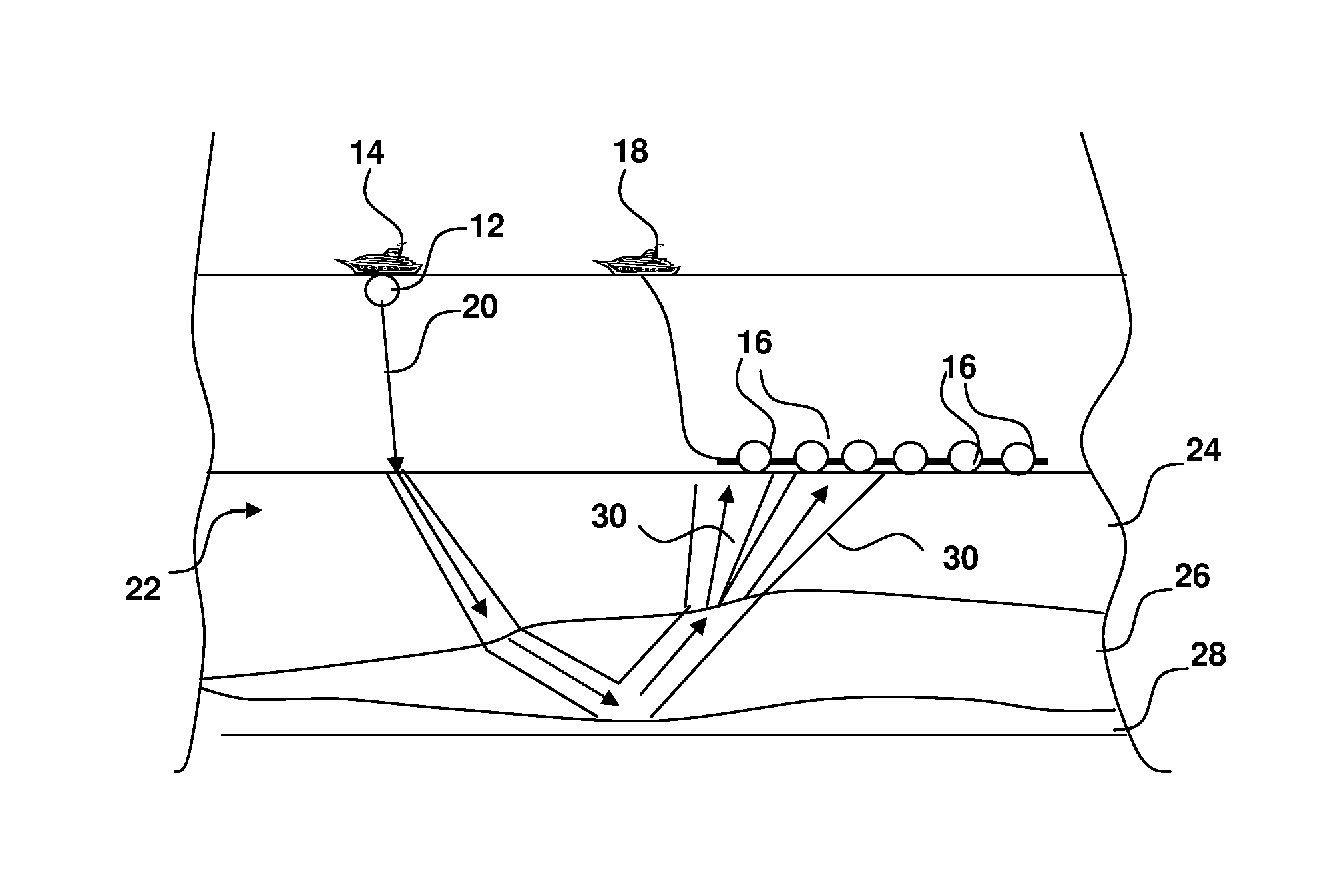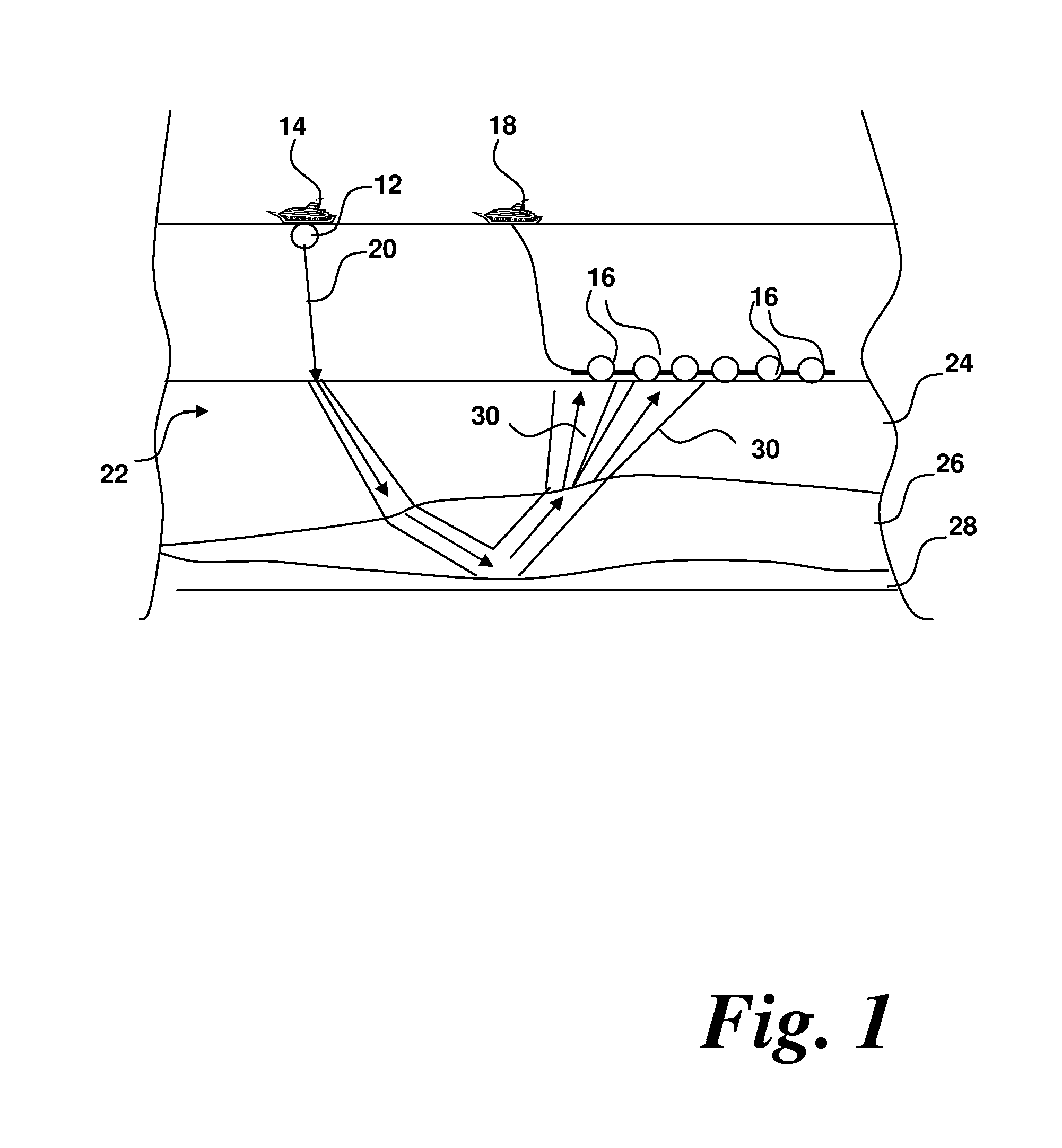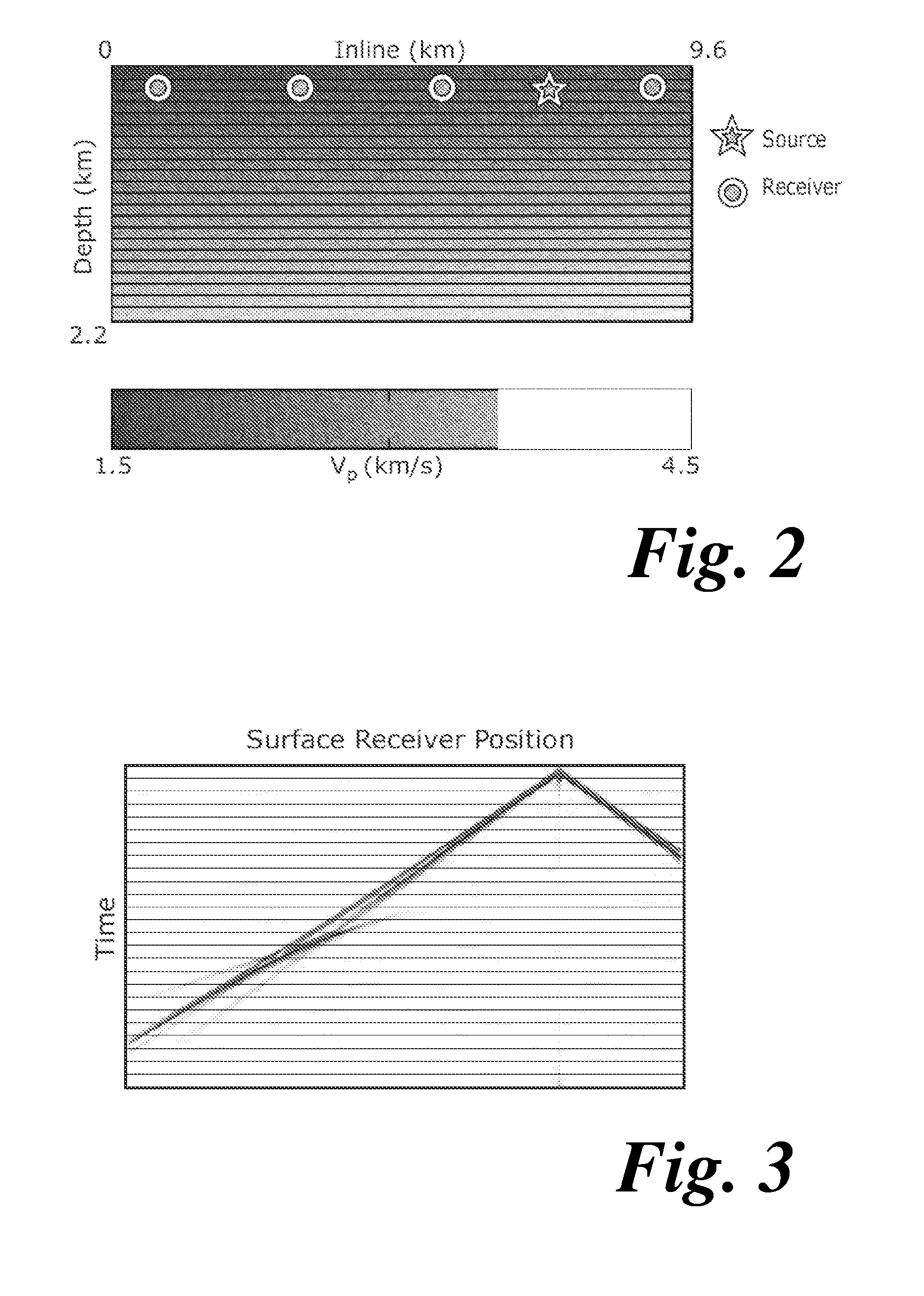Method of, and apparatus for, full waveform inversion
- Summary
- Abstract
- Description
- Claims
- Application Information
AI Technical Summary
Benefits of technology
Problems solved by technology
Method used
Image
Examples
first embodiment
[0143]A method according to the present disclosure will now be described with reference to FIG. 7. FIG. 7 shows a flow diagram of the present disclosure.
[0144]Step 100: Obtain Observed Seismic Data Set
[0145]Initially, it is necessary to obtain a set of experimentally gathered seismic data in order to initiate subsurface exploration. This may be gathered by an experimental arrangement such as the set up shown and described with reference to FIG. 1.
[0146]The gathered seismic data may be optionally pre-processed in various ways including by propagating numerically to regions of the surface or subsurface where experimental data have not been acquired directly. The skilled person would readily be able to design and undertake such pre-processing as might be necessary or desirable. With or without such pre-processing, the resultant seismic dataset representing experimentally-gathered data is known as an “observed seismic data set”.
[0147]As shown in FIG. 1, a large number of receivers or de...
third embodiment
[0213]This approach can be applied to FWI. At each receiver, for each source, a Wiener filter w can be designed that operates on the observed seismic data set dobs to convert the observed seismic data set dobs into the predicted data set dpred. In this embodiment, the filter w operates to convert the observed data into the predicted data. The third embodiment discloses an alternative approach. Equation 26) and 27) denote the approach of this embodiment.
dobs*w=dpred 26)
w=(BTB)−1BTdpred 27)
Here B is the matrix representation of convolution by dobs, and BT is the matrix representation of cross-correlation with dobs. The method proceeds to step 210.
[0214]Step 210: Generate Reference Filter
[0215]Once the convolutional filter is designed in step 208, an analogous convolutional filter is designed such that, when applied to an input dataset, this reference filter will generate an output dataset that provides an equivalent approximation to all or parts of the input dataset. In other words,...
PUM
 Login to View More
Login to View More Abstract
Description
Claims
Application Information
 Login to View More
Login to View More - R&D
- Intellectual Property
- Life Sciences
- Materials
- Tech Scout
- Unparalleled Data Quality
- Higher Quality Content
- 60% Fewer Hallucinations
Browse by: Latest US Patents, China's latest patents, Technical Efficacy Thesaurus, Application Domain, Technology Topic, Popular Technical Reports.
© 2025 PatSnap. All rights reserved.Legal|Privacy policy|Modern Slavery Act Transparency Statement|Sitemap|About US| Contact US: help@patsnap.com



